#sand wasp
Photo
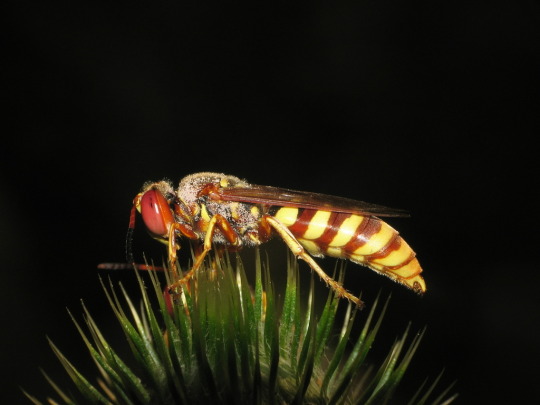
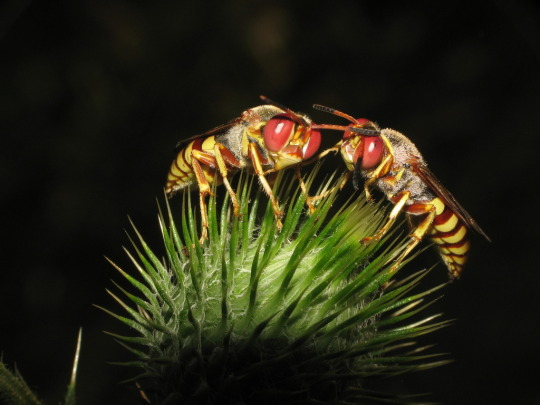
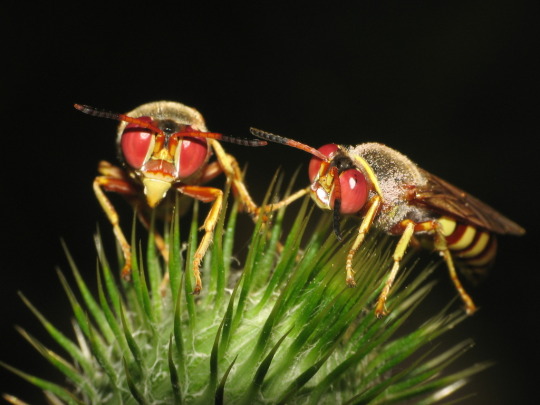

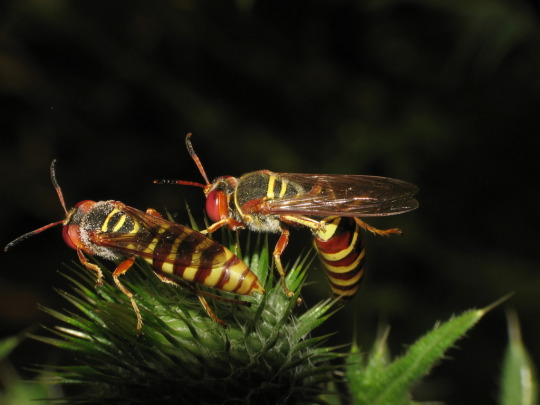
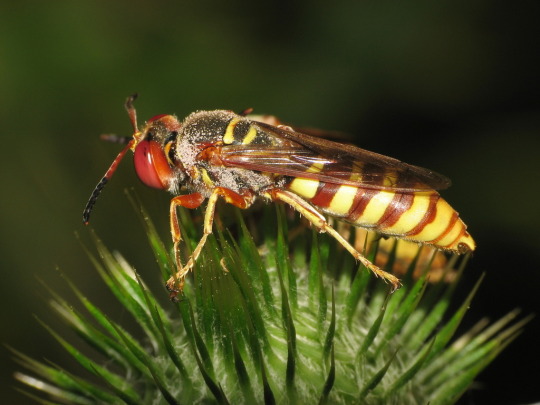
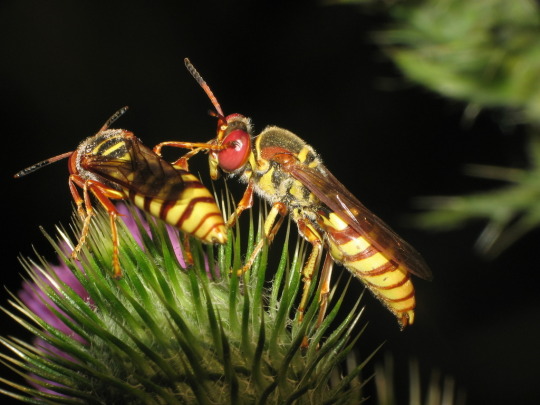
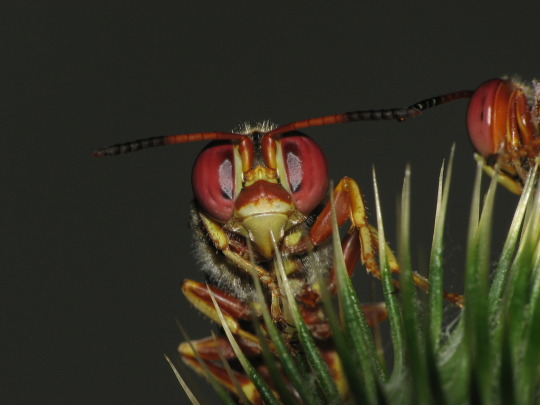
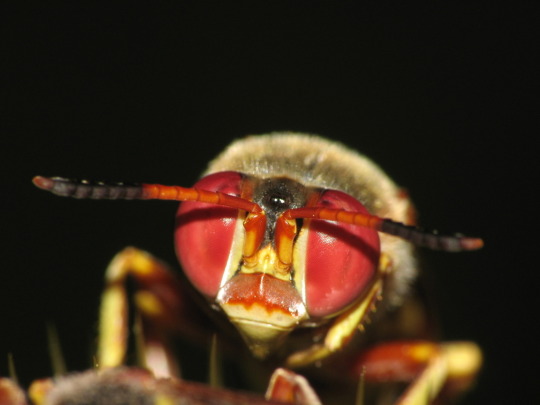

Red-eyed sand wasp, Rubrica nasuta, Crabronidae
Photographed in Argentina by trekman
327 notes
·
View notes
Text
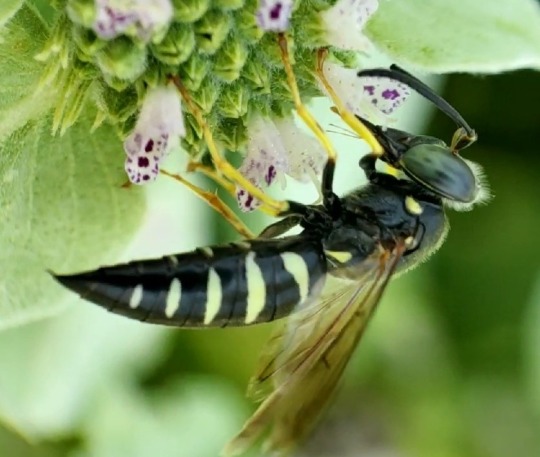
Four-banded stink bug wasp (Bicyrtes quadrifasciatus), a type of sand wasp, in central Pennsylvania.
Sand wasps are called that because they like to lay their eggs in burrows they dig in sand. The female of this species hunts for hemiptera (true bug) nymphs, mainly stink bugs, which she stings and paralyzes. She carries the still living nymphs back to the nest where she lays her eggs. After it is well-stocked with victims, she seals it off. Her larvae will eat the paralyzed nymphs when they hatch.
The adults eat nectar and are pollinators. They can also help with invasive species control, assuming it's a species their larvae would find appetizing.
Here’s another one I found nearby digging a nest:
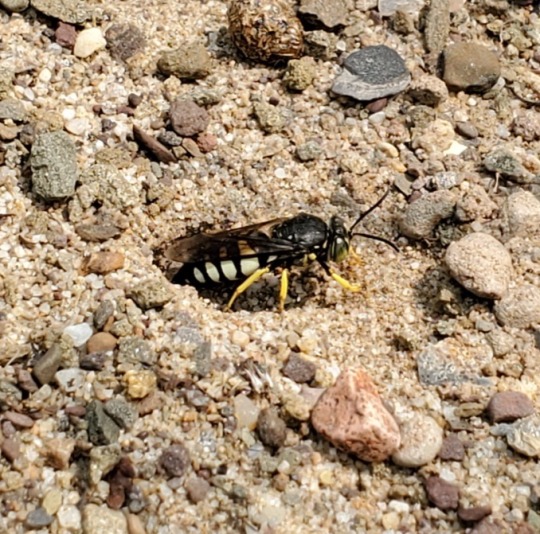
#wasp#wasps are cool#stink bug wasp#Bicyrtes quadrifasciatus#sand wasp#Penn State arboretum#four-banded stink bug wasp#buzz buzz#hymeoptera#Pennsylvania#nature#bugs#nature photography#biodiversity#animals#inaturalist#arthropods#bugblr#insect appreciation#entomology#wasp appreciation#no wasp hate here please#pollinators#support native pollinators#invertebrates#insects#interesting facts#science#fun facts#biology
20 notes
·
View notes
Text
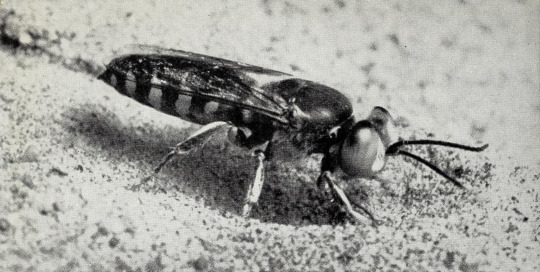
Sand wasp (Bembix occidentalis)
By: Edward S. Ross
From: Insects Close Up
1953
#sand wasp#wasp#hymenopteran#insect#arthropod#invertebrate#1953#1950s#Edward S. Ross#Insects Close Up (1953)
41 notes
·
View notes
Photo


Don’t boost their ego, please
#insects#original character#Insectoid#cicada killer#sand wasp#entomology#my art#Character Design#bugs#bugblr#oc: rox
119 notes
·
View notes
Text

Sand Wasp (Bicyrtes ventralis)
This Sand Wasp was in the process of digging a hole in the sand where she will deposit her egg along with a cache of insect prey to feed her offspring after hatching.
18 notes
·
View notes
Text
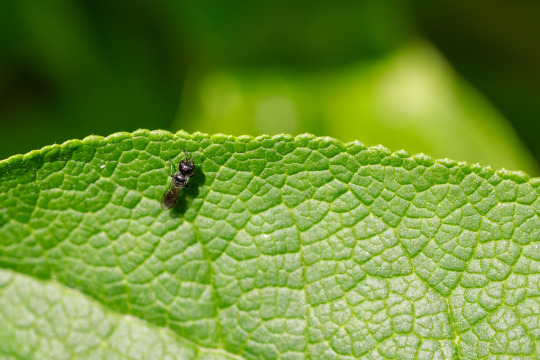
Tiny Wasp
A tiny solitary wasp sitting on a sunlit buddleja leaf, in the garden.
#30dayswild#canon#canonuk#fauna#garden#insect#insects#invertebrate#invertebrates#minibeast#minibeasts#nature#outdoors#sand wasp#solitary wasp#spring#springwatch#wasp#wasps#wildlife
2 notes
·
View notes
Photo



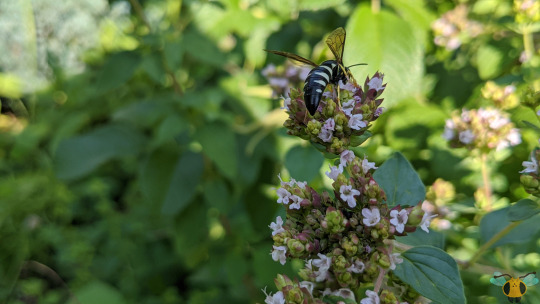

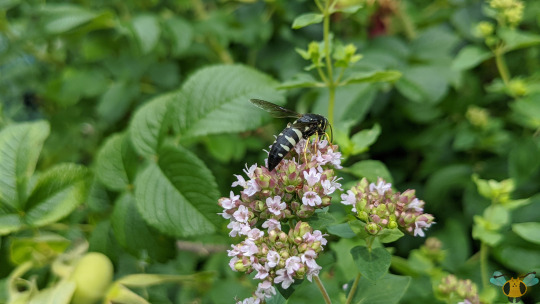

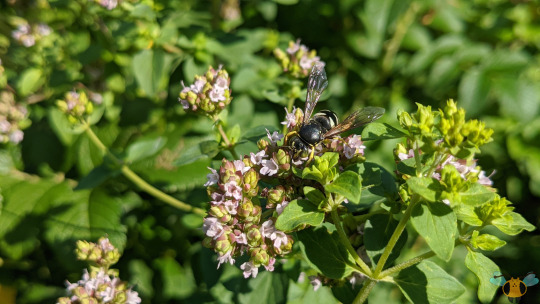
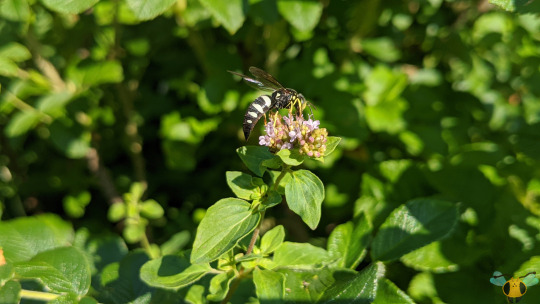
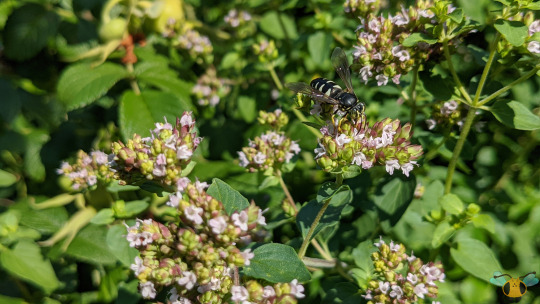
Four-Banded Stinkbug Wasp - Bicyrtes quadrifasciatus
Firstly, this Wasp now has a common name! When first posting about this insect years ago it didn’t have one, so I named it here as the “Four-Banded Black Sand Wasp” to make finding it easy. The name was a reference to its characteristic quad-striping on the abdomen, its classification as a Sand Wasp (of the Tribe Bembicini), with a “black sand” mention for added coolness since black sand is simply amazing. With a common name now given to this striped flower prowler, posts and tags have been changed to reflect the new name: Four-Banded Stinkbug Wasp. I’ve also seen it named as the Stink Bug Hunter Wasp, which clearly explains what exactly it does the Stinks Bugs that it finds, more on that below. Secondly, also mentioned in the previous post was that these insects likely found the oregano in the yard by chance and possibly burrow elsewhere due to activity from established Digger Wasps in the yard. Well, as the years have gone forward, they’ve returned every summer to inspect the oregano flowers for food. Whether or not these Wasps are establishing home in the yard remains to be seen, but looks like the descendants of the Wasps can find the oregano bushes quite easily. Hopefully these pictures give a better view on the features of this Wasp, especially with regards to the Wasp’s head.
They’re genuinely not fond of looking directly at the camera, which is a shame given their large eyes (a necessity when hunting flying prey). Using those eyes, the females find Stink Bug nymphs, sting them and haul them to their burrow as provision for their young. As confirmed from pictures other bug hunters have taken of these insects, the prey items they carry tend to wide, which may task the Wasp of widening the entrance to its burrow in order to pull the prey underground. I imagine that must be the case with the Brown Marmorated Stink Bug! While Stink Bugs are considered their primary prey, I wonder how frequently similar looking insects are captured are prey as well (there’s talk of the Conifer Seed Bug, which is mistaken often for a Stink Bug since it too emits odor as a defense). Getting back to observations, all you’re likely to see immediately are the four bands that decorate the abdomen. If you’re sharp eyed while viewing these pictures, you’ll notice that the bands grow thinner and farther apart from connecting to the “spine” of the abdomen as you move closer to the tip of the abdomen. This examination means you’ve successfully identified B. quadrifasciatus! On occasion, males have been found with their elongated abdomens featuring 5 stripes! If you can positively identify your Wasp, knowing its a male means there’s no fear of being stung from the 5-striped specimen. It has to have defined bands though; a speck of color does not count!
Pictures were taken on July 12 and 21, 2020 with a Google Pixel 4.
#jonny’s insect catalogue#ontario insect#wasp#four banded stinkbug wasp#sand wasp#hymenoptera#insect#2020#july2020#toronto#entomology#nature#invertebrates
10 notes
·
View notes
Text
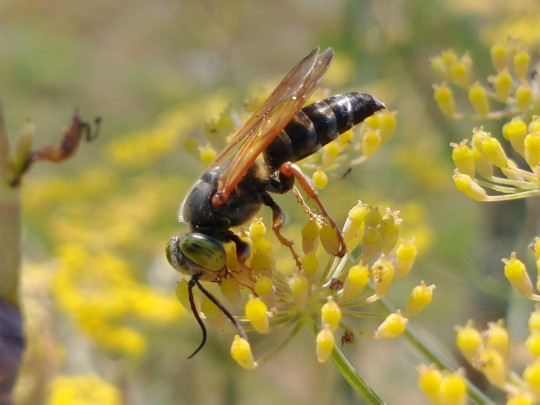
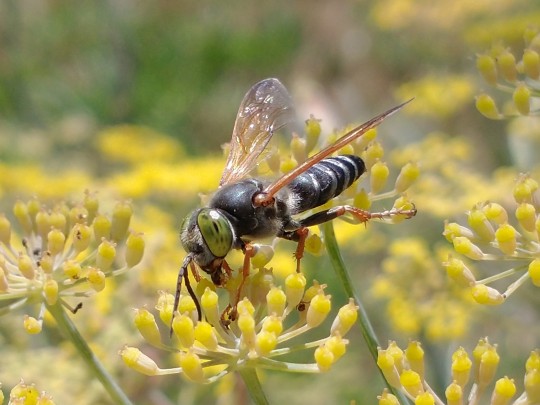
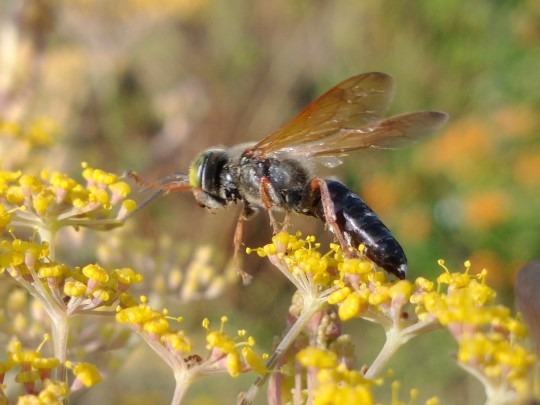
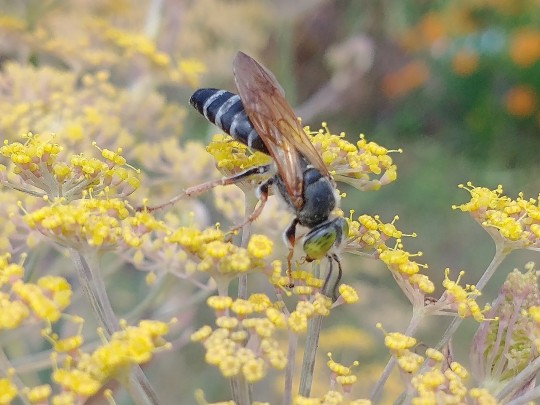

These guys are more excited and fly around more than the other wasps. There are larger and smaller ones, possibly females and males. I think they're in the genus Bembix, which are sand wasps, but I can't find which species fits, especially the colors.
2 notes
·
View notes
Text
Hello there Sand Wasp/Jigabachi fans.
0 notes
Text

I am very intrigued by this paragraph from the Missouri department of conservation website that seems to suggest people try hand-feeding injured flies to sand wasps
10K notes
·
View notes
Text
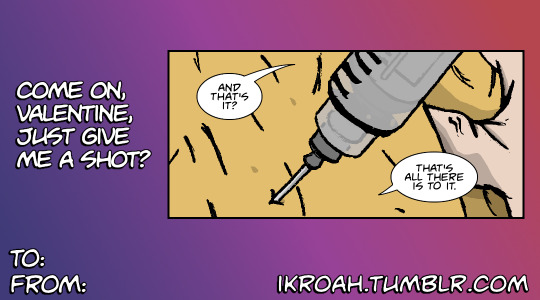


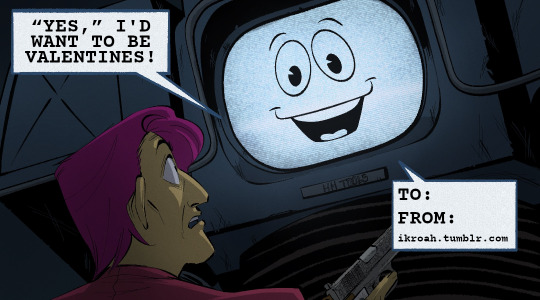


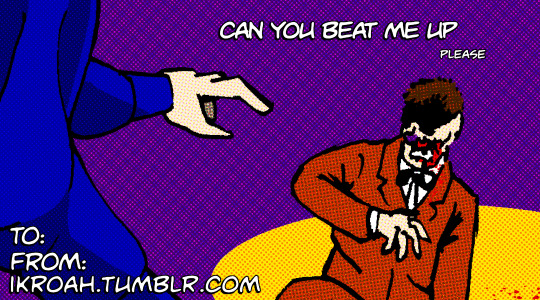


Wow it's been another two years which means it's time for volume three of @ikroah valentines! (volume one) (volume two) Here's nine wholesome and romantic e-cards inspired by the four issues that have come out since the last installment. Send them to somebody you like!
And don't forget that the next issue of @ikroah comes out February 27th!
#ikroah meta#fallout new vegas#mr. house#yes man#rose of sharon cassidy#courier six#agnes sands#bugs#tarantulas#wasps
54 notes
·
View notes
Photo
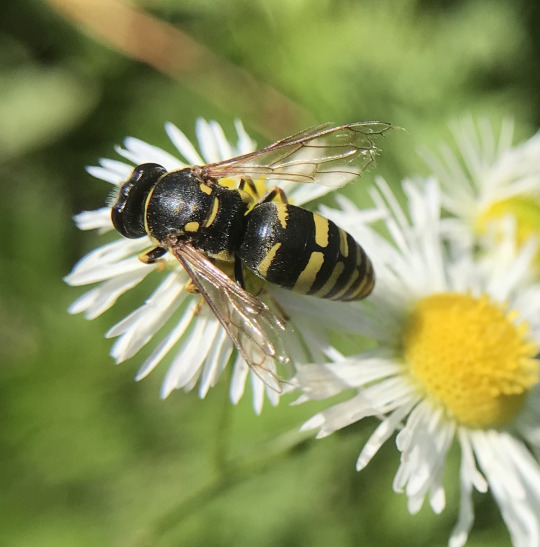
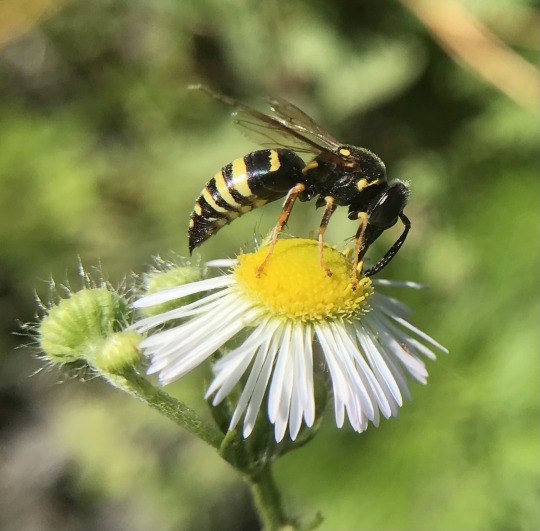
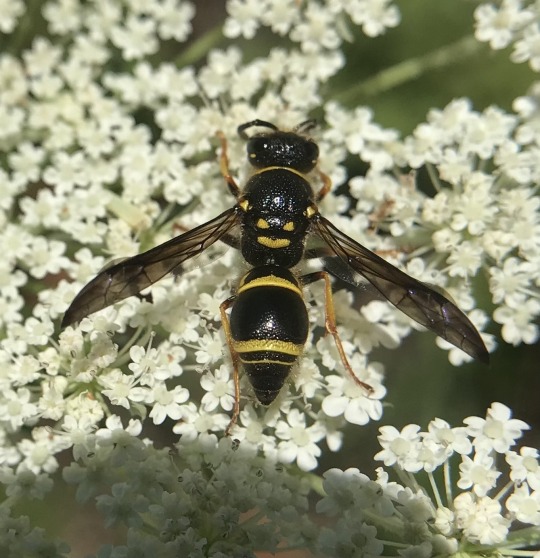
@icykali submitted: I seem to have great luck finding wasps with smiley patterns. Here are (what I believe to be) Bicyrtes ventralis and a smiling mason wasp.
Little faces!!! Excellent finds, I love these dudes. The second one reminds me of an angry jack-o-lantern face.
#insects#bugs#submission#wasp#smiling mason wasp#sand wasp#Bicyrtes ventralis#IDs look correct but would need location to confirm
172 notes
·
View notes
Text
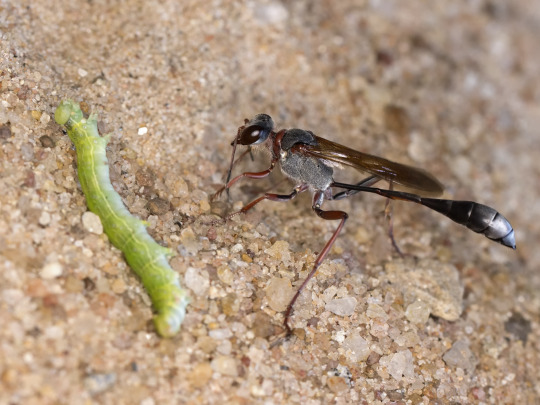



One day early in the trip, I was sick and stayed around my tent all day. It wasn't nice to be sick, but the surroundings were beautiful, birds were singing, and it was a chance to poke around and look at bugs.
When I first saw this wasp, it had immobilized the green caterpillar and hauled it to a sandy spot right next to the tent. When I circled back a while later, it had stuffed the caterpillar in a hole and buried it with pebbles. Just like home!
Masai Mara, Kenya, July 2023.
#wasp#caterpillar#insect#kenya#photographers on tumblr#textless#amadee ricketts#hunting#macro#sand#hole#pebble#parasitoid wasp#circle of life etc#thread-waisted wasp#entomology
59 notes
·
View notes
Text

Sand wasp (Bembix occidentalis)
By: Edward S. Ross
From: Insects Close Up
1953
#sand wasp#wasp#hymenopteran#insect#arthropod#invertebrate#1953#1950s#Edward S. Ross#Insects Close Up (1953)
42 notes
·
View notes
Text
weird teenage girls who become obsessed with what they fear, who learn their fears inside out, who ascertain expertise on their fears, and then when someone is like “wow, you know a lot about wasps, you must really like them :)” they just have to be like no <3
#tw insects#cw insects#there were these huge wasps that would swarm the street next to mine by the dozens#they’re extremely curious and will come after people and bump into them#and they’re LOUD too so even if you can’t feel one sniffing around u u can hear it#they come out of holes in the dirt. for years I called them sand bees#it took me a long time to figure out what they actually are#they’re called cicada killer wasps and they go to ground the same time perennial cicadas do#they lay their eggs inside the sleeping cicadas and come summer the babies eat their way out while the cicada is still alive#they rarely sting humans. but they can#my best girl who’s afraid of whales has a tracker for them up on her computer always#we are what we fear#squawk tag
66 notes
·
View notes
Photo
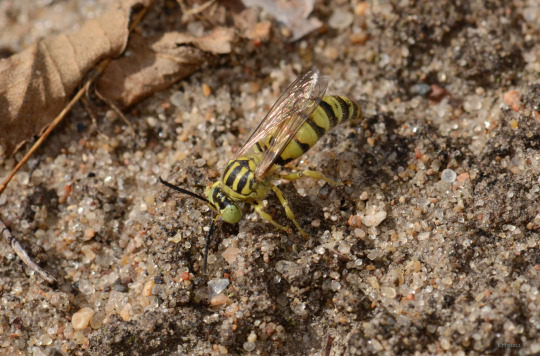
Sand Wasp (Bembecinus neglectus)
The current window of opportunity to see this rare Sand Wasp quickly closes.
14 notes
·
View notes